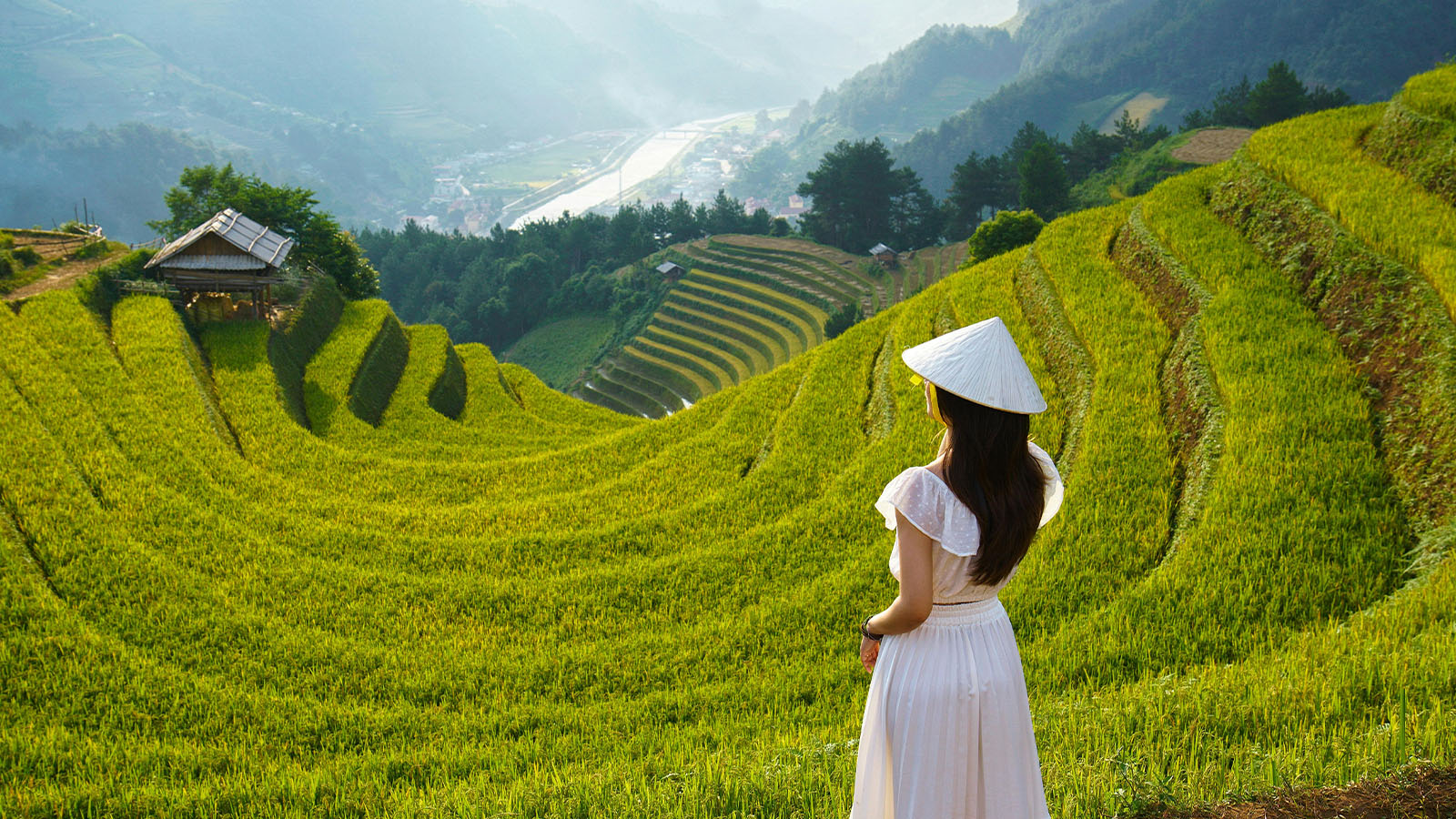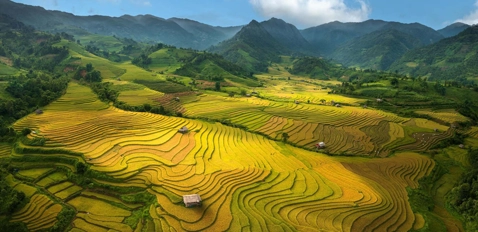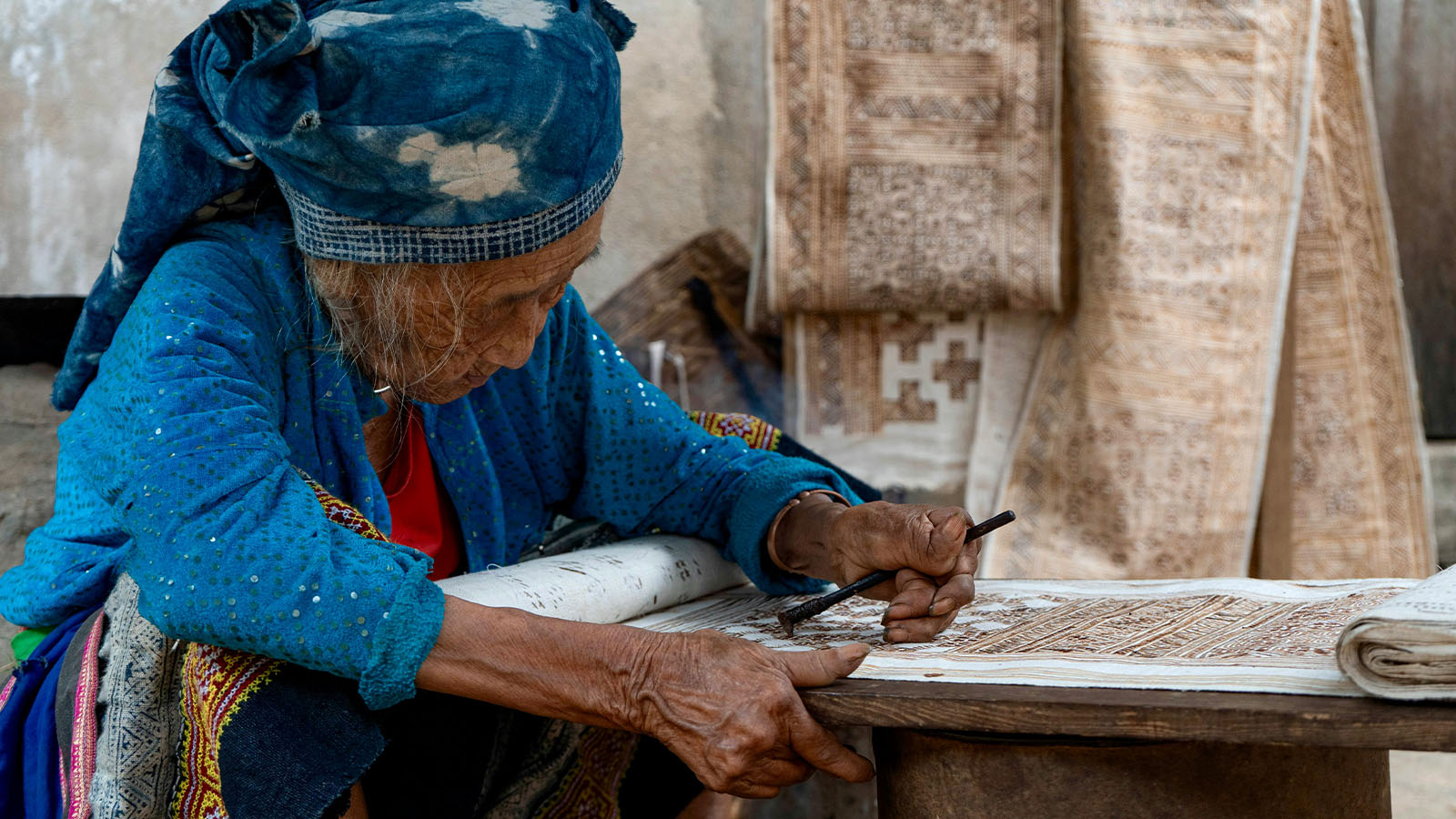What to Wear in January in Vietnam for Every Region
January is one of the best months to visit Vietnam. The weather is cooler in the north, dry and mild in the central coast, and warm in the south. You can enjoy everything from foggy mountains in Sapa to sunny beaches in Phu Quoc. It’s also a great time to explore cities like Hanoi, Hue, and Ho Chi Minh City without the intense heat. If you arrive later in the month, you’ll notice the country getting ready for Tet, the Lunar New Year. Streets light up with flowers, decorations, and markets.
Planning your outfits for this time can be a bit tricky since the weather changes from region to region. In this guide, we’ll walk you through what to wear in January in Vietnam for every region, so you can stay comfortable and enjoy your trip without overpacking or getting caught off guard.
Is it cold in Vietnam in January?
If you're planning a trip to Vietnam in January, you’ll need to prepare for different types of weather. Vietnam stretches more than 1,600 kilometers from north to south, so the climate changes a lot depending on where you go. It can get cold in January in the north, but not everywhere.
Northern Vietnam
In the north, January is the coldest month of the year. Hanoi often stays around 14–18°C during the day but can drop to 10°C or lower at night. It feels colder than it looks on paper because of the humidity and lack of indoor heating. If you're visiting mountain areas like Sapa or Ha Giang, prepare for temperatures as low as 5°C. Sometimes it gets close to freezing. You won't see snow in the cities, but Sapa can have frost and even snow in some cases. You’ll need to wear layers, and we’ll get to that later in the article.
Central Vietnam
Central Vietnam in January is usually cooler than usual, but not freezing. Temperatures range from 18 to 23°C. There might still be rain, but it's reaching the end of the rainy season in Central Vietnam. Hoi An and Da Nang often get better weather, with a mix of clouds, sunshine, and occasional rain. It’s not perfect beach weather, but it’s good enough for sightseeing.
Southern Vietnam
The south is the warmest part of Vietnam all year round, and January is part of the dry season. Temperatures are pleasant, around 26–30°C during the day, with low humidity and little rain. It’s a great time for outdoor activities, boat trips, and beach holidays. We think January is one of the best months to visit southern Vietnam.
What to Wear in January in Northern Vietnam
You’ll need warm clothes if you’re visiting Hanoi, Sapa, Ha Giang, or anywhere in the north. It’s the coldest part of the country, and most places don’t have central heating. The cold feels deeper because of the damp air and riding motorbikes.
Bring a warm jacket, preferably one that protects against wind and light rain. You should also pack sweaters, thermal tops, and long pants. We suggest layering so you can adjust throughout the day. You might start cold in the morning, warm up by noon, then get chilly again at night.
If you're heading to the mountains like Sapa, bring a hat, gloves, and scarf. It really does get that cold. You’ll also need comfortable walking shoes or boots for hilly terrain, especially if you’re planning on trekking. The paths can be slippery.
Inside homes and hotels, it can feel just as cold as outside, especially in budget places. So bring warm sleepwear and maybe even a small hot pack or two.
What to Wear in January in Central Vietnam
Central Vietnam in January is mild and comfortable. You’ll probably get sunshine and clouds, and maybe a light drizzle in some areas. But it’s nothing serious; the heavy rains from the autumn months usually ease up by now.
During the day, you can wear T-shirts, short-sleeved tops, or light long-sleeved shirts. It usually gets cooler in the late evening. You won’t need thick layers or anything heavy. A light jacket or sweater is usually enough.
For pants, we recommend light trousers, jeans, or midi skirts. Shorts are fine for sunny days, especially if you're heading to the beach. You can also pack a swimsuit if you’re visiting coastal areas—the sea might be a little cold, but it’s still good for walking along the shore or relaxing on the sand.
Footwear should be comfortable and easy to walk in. Lightweight sneakers or sandals work well.
In general, January is one of the most pleasant months to explore central Vietnam. You don’t have to worry much about rain or heat. Just keep your packing simple and include one warm layer for safety.
What to Wear in January in Southern Vietnam
Southern Vietnam in January is warm and dry. That includes Ho Chi Minh City, the Mekong Delta, Can Tho, and Phu Quoc. You don’t need anything heavy, but you still need to pack smart.
Wear lightweight, breathable clothes—like cotton T-shirts, linen tops, shorts, or skirts. The sun can be strong, so you’ll want a hat, sunglasses, and sunscreen. We recommend carrying a long-sleeved shirt if you’re out in the sun for a long time. Some people get sunburned without realizing it.
Shoes should be comfortable for walking, and sandals are fine. If you're visiting the floating markets or taking boat rides in the Mekong, slip-on shoes are a good choice. In dry weather, the roads are dusty, so covered shoes can help.
For beach destinations like Phu Quoc, pack a swimsuit, flip-flops, and a light beach cover-up.
Accessories & Extras to Pack
Besides clothing, here are a few things we suggest you pack for your January trip to Vietnam:
Sunscreen: Even in the north, UV rays can be strong during the day.
Sunglasses and a hat: These help a lot in the central and southern regions.
Light scarf or shawl: Useful for sun protection, temple visits, or staying warm in the north.
Small umbrella or packable rain jacket: Rain isn’t common in January, but it still helps to have one, especially in Hue or the mountains.
Comfortable walking shoes: You’ll do a lot of walking, from old towns to markets.
Warm sleepwear: Many budget places in the north don’t have heating, and nights can get cold.
Lip balm and moisturizer: Northern air can feel dry, especially at high altitudes.
Laundry detergent sheets or travel soap: Good if you plan to pack light and wash clothes on the go.
Swimsuit: You’ll need this for Phu Quoc or southern beaches.
Tips for traveling in Vietnam in January
Book early: January is a popular month for both foreign and local tourists, especially near Tet (Vietnamese Lunar New Year). Rooms and transport can fill up quickly.
Bring a little bit of everything: Weather can change depending on the region, so pack for both cool and warm days.
Wear layers in the north: This gives you flexibility. Mornings and evenings can be very cold, but the afternoons often warm up.
Keep an eye on Tet dates: If you’re traveling near the end of January, Tet might be around the corner. Shops, restaurants, and services can close for several days.
Respect local customs: Avoid wearing shorts or sleeveless tops when visiting temples or religious sites.
Protect your belongings: January is a busy time, so always keep your phone, passport, and wallet safe in crowded areas.
FAQs
What are the cool months in Vietnam?
The coolest months in Vietnam are December to February. Northern Vietnam can get cold, especially in the mountains. Central Vietnam is mild. The south stays warm all year.
What should I pack for Hanoi in January?
Pack a warm jacket, sweaters, long pants, and layers. Bring comfortable walking shoes, a scarf, and a hat. The air can be damp and chilly, especially in the early morning and late evening.
What to wear in Halong Bay in January?
Wear warm layers like a light sweater, windbreaker, and jeans or trousers. It can get misty and cool on the boat. Bring a rainproof jacket, just in case. Don’t forget comfortable shoes for walking around caves or islands.
What to wear in Sapa, Vietnam, in January?
Sapa is cold in January. Sometimes it drops below 10°C. Pack thermal tops, a winter jacket, a hat, gloves, and warm pants. If you plan to trek, bring hiking shoes with good grip.
Can you swim in Da Nang in January?
The sea is cooler in January, but some people still swim on warmer days. If you like the beach, bring a swimsuit, but don’t expect tropical water temperatures. It’s still a nice time to walk or relax by the shore.
What to wear in January in Vietnam (female)?
Female travelers should pack comfortable and modest clothes. Long pants or maxi skirts, light long sleeves, and a light jacket work well. In the north, add warm layers. In the south, wear light cotton clothes, and bring a scarf for temples or sun protection.
Conclusion
January gives you the chance to experience Vietnam’s natural beauty and local culture in comfort. With cooler weather in the north and warm sunshine in the south, it’s a great time to see the whole country. Now that you know what to wear in January in Vietnam for every region, you can pack smarter and travel more confidently.
If you’re ready to explore Vietnam this season, we invite you to book a tour with us. Let’s help you see the best of Vietnam, one destination at a time.
>>> What to Wear in February in Vietnam for Every Region
>>> Top 20 Festivals In Vietnam: Iconic Cultural Celebrations From North To South
Send us your comments about : What to Wear in January in Vietnam for Every Region
Required fields *
You might also be interested
Travel ideas
Need some inspiration? Discover some of the best tours in Vietnam, which are highly appreciated by our clients. An excellent starting point to help you choose the right trip to Vietnam, Laos, Cambodia, Burma or Thailand, whether you are traveling alone, as a couple, as a family or with friends.
And because this trip is yours, feel free to customize it as you wish!
Vietnam Cambodia Itinerary 14 Days
Hanoi – Hoa Binh – Mai Chau – Ninh Binh – Halong bay – Hue - Danang – Hoian – Saigon – Ben Tre - Can Tho – Saigon - Siem Reap Angkor - Tonlé Sap - Siem Reap – Ta Prohm - Departure
Vietnam 14 Day Itinerary
Vietnam 14-day itinerary covers the country’s top highlights and quintessential experiences for an unforgettable journey.
Honeymoon Tour Pakcages In Vietnam 12 Days
Saigon Arrival - City Tour – Mekong Delta – Danang – Hoian - by flight - Da Nang – Hanoi - by flight – Halong - overnight on junk – Departure
Authentic Hoang Su Phi Trekking Tours
Hoang Su Phi trekking tours take you to stunning terraces, meet few tourists, connect with locals and enjoy authentic culture.
Best Nha Trang Beach Tour 4 Days
Saigon/Hanoi – Nha Trang relaxation – Saigon/Hanoi – Departure
Mekong Delta Bike Tour Itinerary 7 Days
Cycle through the Mekong Delta in 7 days, discovering floating markets, orchards, craft villages, and tranquil green islands.
Are you interested in this tour?






































Comment